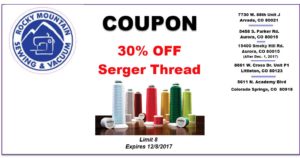I wanted to make my granddaughter a cotton Christmas skirt full of ruffles. I already know the many ways to make ruffles. Previous blogs, Don’t Get Ruffled, Get Ruffling: Gather Fabric Using a Serger, Specialty Sewing Machine Feet for Gathering Fabric, and How to Gather Fabric and Create Ruffles, have illustrated various ways to make ruffles. However, I really cringed at the thought of sewing a narrow hem along each of the six ruffles. So, I decided to do rolled hems on the edges of the ruffles rather than narrow hems. In a rolled hem, the machine folds the fabric under a tiny bit and then stitches it. You can make rolled hems on a regular sewing machine with a rolled hem foot. However, the fastest way is to use a serger to make the rolled hems.
Of the many sewing techniques that are possible with a serger, rolled hems are definitely one of the most popular. Most sergers offer a two-thread or a three-thread rolled edge — you will need to check your serger manual to see what is possible for your machine. Two-thread rolled hems are perfect for delicate fabrics because only a minimal amount of thread is added to the garment. Lightweight organdy, batiste or silk chiffon are all examples of fabrics that need the light touch of only two threads. For the cotton skirt, though, I decided to use three-thread rolled hems. This stitch provides a little sturdier edge finish than a two-thread rolled edge. It is great for woven cottons.
Rolled Hems
Thread your serger according to your manufacturer’s directions for a three-thread rolled edge. You will only need the right needle for the three-thread rolled hems.
Practice serging the rolled hem on a medium weight woven fabric, such as quilting cotton, to get a feel for the way the different settings affect the stitch. Test your rolled hem edge on a scrap of the fabric you’ll be using and adjust cutting width or stitch length as needed to get the desired result. Both of these settings should be as small as possible, or close to it for a nice rolled edge.
Stitch Finger
Be sure to engage the “stitch finger” on your machine so that the thread can form around it, creating the rolled effect on the fabric. Note in the photo below how the fabric is folded over slightly just before it is sewn by the serger.
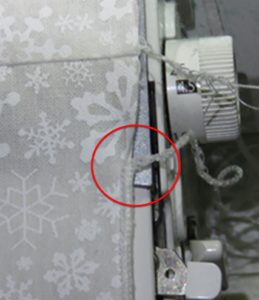
Differential Feed
One of the most important considerations when using a serger is the differential feed. Sergers have two sets of feed dogs (rather than a standard machine, which has one set), so you can change the speed of each feed-dog set depending on the fabric type and the effect that you want to create. For a non-stretch woven fabric, start with the differential feed on neutral or zero. This means that both sets of feed dogs are moving at the same speed. This setting will give you flat, rolled hems.
(You can create a”lettuce” rolled hem on knit fabric by setting the differential to 0.7. Even with the differential set, however, you still have to stretch the fabric as you create the hem. Check out this blog for more information on creating a lettuce rolled hem.)
Cutting Knife
Engage the cutting knife to neatly trim away the correct amount from the fabric edge as you serge. Once all of the settings are correct, serge for a few inches to create a thread chain. This allows the threads to form a rolled hem stitch that neatly grabs the fabric edge. Insert your test-fabric scrap, and serge the edge.
Now that you have all your settings correct and are happy with the results you can serge the hems of your fabric into a beautiful rolled hem.
When you’ve finished the hem, carefully trim away the thread chains and apply a small drop of seam sealant to prevent the stitch from unraveling.
Textured Nylon Thread
Sometimes referred to as Wooly Nylon (which is actually a brand name for a YLI product), this almost spongey, yarn-like thread actually expands and contracts with tension. It can be used in both the loopers and needles. By using textured nylon thread in the upper looper, the thread will actually expand and fill in the space between the stitches.
In the pictures below, the fabric in the left photo was hemmed with regular polyester serger thread. The fabric in the right photo was hemmed with textured nylon thread in the upper looper. You can see some of the white fabric peeking out between the stitches on the left, but not on the right.
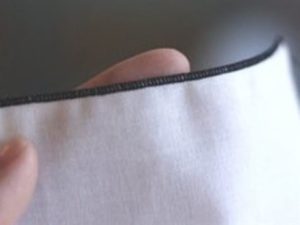
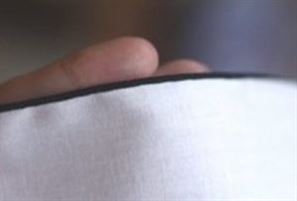
The Serger
I just have to tell you about the particular serger I used! Creating rolled hems is a breeze with the Juki air threader (MO 2000QVP). I love this machine! First of all, it just takes a flip of a lever, a twist of a knob and a push of a button to thread the upper and lower loopers. There’s also a built in needle threader. See this machine in action at our You Tube channel:
One thing to note about the air threader on this machine. Use really good serger thread. I was amazed at the difference in using Madeira serger thread and Maxi Lock thread. It took several tries to get the Maxi Lock thread to seat well in the holes for auto threading. The Madeira thread worked the first time, every time.
Rolled Hem Settings
On the Juki MO2000 QVP, select the rolled hem stitch (#8). The LCD screen displays the suggested settings for a rolled hem.
- Right needle only
- Needle tension 4.0
- Upper looper tension 3.5
- Lower looper tension 6.0
- Cutting width 1.0
- Stitch width 1.0
- Normal feed (no differential)
- Rolled hem claw position
- Upper looper engaged (disengage for 2 – thread rolled hem).
- Cutter engaged
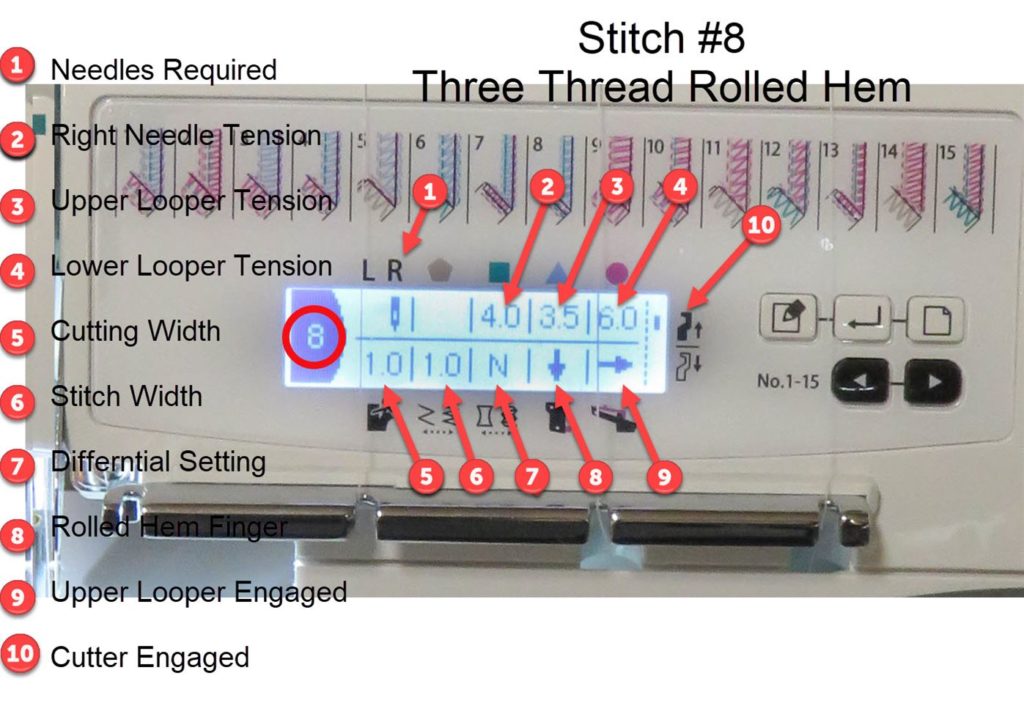
Once you see the recommended settings, all you have to do is set the machine up as suggested and run a test strip.
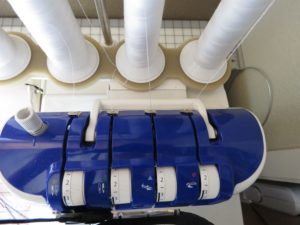
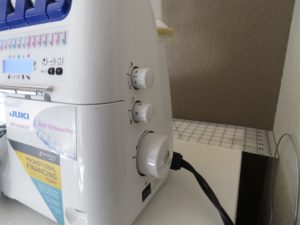
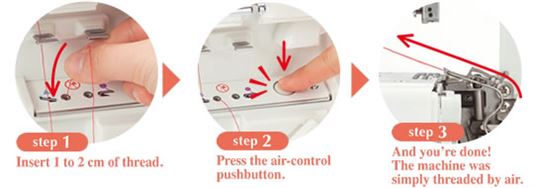

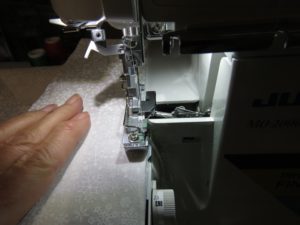
Now it’s a breeze to hem the edges of the six ruffles I am using in the skirt.
Look how lovely the rolled hems look:
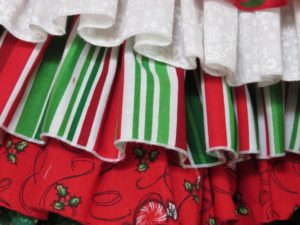
Other Uses for Rolled Hems
Rolled hems are perfect to use on ruffles or flounce edges. You will also see rolled hems around the edges of napkins and tablecloths, and on a lot of knit clothing. Consider using a rolled hem edge to finish sleeve or shirt hems on georgette blouses. A two-thread rolled hem is also lovely on lingerie items like slips and camisoles.
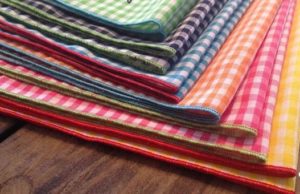
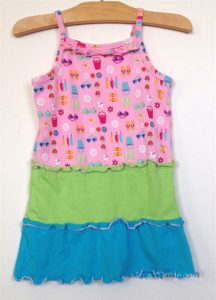
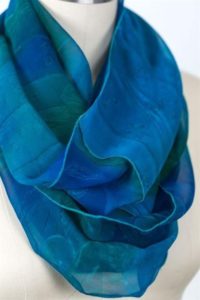
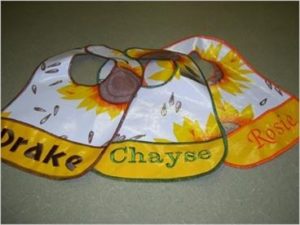
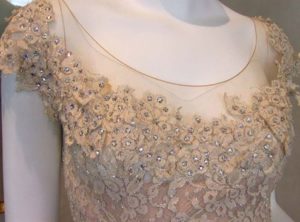
Whatever you want to put a rolled hem on, using a serger to create the hems is fast and easy. If you don’t have a serger, stop in to one of our stores and take one for a test drive. I absolutely loved the Juki MO 2000 QVP, but we carry other brands and are sure to have one to fit your preferences and budget.
Coupon
To get you going on serging those rolled hems, here’s a coupon for 30% off serger thread.

